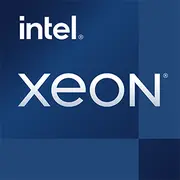Intel Xeon E3-1575M v5

인텔 제온 E3-1575M v5: 콤팩트한 케이스의 모바일 워크스테이션
2025년 4월
아키텍처와 공정: 스카이레이크의 세부 사항
2016년에 출시된 인텔 제온 E3-1575M v5 프로세서는 스카이레이크 마이크로아키텍처와 14nm 공정 기술에 기반을 두고 있습니다. 이는 전문 노트북을 위해 설계된 몇 안 되는 모바일 제온 중 하나입니다.
- 코어 및 스레드: 하이퍼 스레딩 덕분에 4개의 코어와 8개의 스레드를 지원합니다. 기본 클럭 주파수는 3.0GHz, 터보 모드에서 최대 3.9GHz입니다.
- 캐시: 8MB의 L3 캐시로, 2016년도에 고성능 CPU에 표준으로 제공되었습니다.
- 통합 그래픽: 72 EU(Execution Units)와 128MB eDRAM을 갖춘 인텔 아이리스 프로 그래픽스 P580. 이는 인텔의 표준 HD 그래픽보다 현저히 강력하여, 엔트리 레벨의 독립 GPU와 비교해도 손색이 없습니다.
스카이레이크 아키텍처는 이전 세대인 브로드웰에 비해 IPC(Instructions Per Cycle)를 5-10% 향상시켰습니다. 이는 CAD 모델링이나 코드 컴파일과 같은 단일 스레드 성능에 민감한 작업에서 특히 두드러집니다.
전력 소비와 TDP: 성능과 효율성의 균형
프로세서의 TDP는 45W로, 워크스테이션을 위한 에너지 효율적인 솔루션 범주에 속합니다. 현재의 인텔 코어 12세대 모바일 CPU(2023-2025년)는 비슷한 TDP로 더 많은 코어를 제공하지만, 제온 E3-1575M v5는 다음과 같은 이유로 여전히 유효합니다:
- 최적화된 열 프로필: 로드가 걸린 상태에서도 잘 설계된 시스템에서는 온도가 85℃를 초과하지 않습니다.
- ECC 메모리 지원: 데이터의 오류 없는 처리가 중요한 작업(예: 엔지니어링 계산)에 필수적입니다.
하지만 2025년에는 45W가 더 이상 꿈의 수치는 아닙니다. AMD 라이젠 7 7840U(TDP 28W)와 같은 최신 프로세서는 더 낮은 전력 소비로 유사한 성능을 보여줍니다.
성능: 사무실에서 렌더링까지
사무작업: 2025년에는 이 프로세서가 Chrome에서 20개 이상의 탭, 매크로가 포함된 Excel, Zoom을 모두 지연 없이 처리할 수 있습니다. Geekbench 6의 싱글 코어 결과(1326)는 2020년의 인텔 코어 i5-1135G7에 가까워 대부분 사용자에게 충분합니다.
미디어 작업:
- HandBrake에서 4K 비디오 변환은 약 12분이 소요됩니다(비교: 라이젠 5 7600X는 약 7분).
- Adobe Photoshop 2025는 원활하게 작동하지만 AI 기반 필터(예: 신경망 필터)는 인내가 필요합니다.
게임 성능: 2025년 Iris Pro P580은 편안한 게임을 위한 최소 사양입니다. 예시(설정: 낮음/중간, 1080p):
- CS2: 60-70 FPS.
- GTA V: 45-50 FPS.
- 사이버펑크 2077: 25-30 FPS (FSR 성능 모드에서만).
터보 부스트: 터보 모드에서는 클럭 주파수가 3.9GHz에 도달하지만, 1-2개의 코어에서만 가능합니다. 모든 코어가 최대 로드일 경우 3.5GHz입니다.
사용 시나리오: 2025년에 제온 E3-1575M v5는 누구에게 적합한가?
- 엔지니어 및 디자이너: CAD 응용 프로그램(SolidWorks, AutoCAD)에서의 안정성과 ECC 메모리 지원.
- 개발자: 로컬 프로젝트 빌드 및 가상화(Docker, VMware).
- 프리랜서: 저렴한 워크스테이션에서 사진/비디오 편집.
게임이나 신경망 작업에는 이 CPU가 구식이지만, 신뢰할 수 있는 "일하는 말"의 기반으로는 여전히 유효합니다.
배터리 지속 시간: 노트북은 얼마나 오래 사용할 수 있을까?
이 프로세서를 장착한 노트북의 평균 사용 시간은 혼합 작업(Wi-Fi, 사무작업, 밝기 50%)에서 4-6시간입니다. 에너지 절약 기술:
- 인텔 스피드스텝: 주파수 동적 조정.
- C 상태: 사용되지 않는 코어 비활성화.
조언: 80Wh의 배터리를 갖춘 모델(예: Dell Precision 3510)을 선택하세요 — 이러한 모델은 읽기 모드에서 최대 8시간까지 사용할 수 있습니다.
경쟁 제품 비교
- AMD 라이젠 7 PRO 6850U (2022년): 8코어/16스레드, TDP 28W, Radeon 680M. 멀티 스레드 작업에서 더 뛰어납니다(+30% Cinebench R23), 하지만 ECC 메모리는 지원하지 않습니다.
- Apple M2 (2022년): 싱글 코어에서 30% 더 빠르며, 에너지 효율성은 2배 더 뛰어나지만, macOS 생태계는 모든 사람에게 맞지 않습니다.
- 인텔 코어 i7-11850H (2021년): 8코어/16스레드, 게임 성능은 우수하지만 TDP 45W 및 온도는 95℃까지 올라갑니다.
가격: 2025년 제온 E3-1575M v5가 장착된 노트북은 드물게 등장하며, 중고 시장에서의 가격은 $300–500입니다. 새로운 유사 모델(예: 인텔 코어 i7-1360P가 장착된 Dell Precision 3581) 시작가는 $1500입니다.
장점과 단점
강점:
- ECC 메모리 지원.
- 장시간 부하에서도 안정적인 작동.
- 그 시기에 비해 뛰어난 통합 그래픽.
약점:
- 4코어에 불과하며, 최신 CPU와 비교해 8-12코어로 부족합니다.
- 2025년 성능에 비해 높은 전력 소비.
- PCIe 4.0/5.0 지원 미비.
노트북 선택 추천
- 장치 유형: 워크스테이션(Dell Precision, HP ZBook) 또는 프리미엄 비즈니스 노트북(레노보 씽크패드 P50).
- 주목할 요소:
- 냉각 시스템(최소 두 개의 팬).
- 업그레이드 가능성(메모리 최대 64GB, SSD 2슬롯).
- 색상 중요한 작업에 적합한 100% sRGB를 커버하는 화면.
2025년 예시: 중고 Dell Precision 3510, 제온 E3-1575M v5, 32GB RAM, 1TB SSD — 약 $450.
최종 결론
2025년 인텔 제온 E3-1575M v5는 ECC 메모리 지원과 검증된 신뢰성을 갖춘 저가형 워크스테이션을 찾는 이들에게 적합한 선택입니다. 이는 다음과 같은 사용자들에게 적합합니다:
- 출장 중 CAD 작업을 하는 엔지니어.
- 안정성이 요구되는 IT 전문가.
- 전문 소프트웨어를 배우는 기술 대학생.
주요 이점: 소비자 CPU에는 없는 가격과 전문 기능의 균형. 그러나 현대 게임이나 AI 작업에는 더 최신 솔루션을 고려해야 합니다.
P.S. 예산이 $1000 이하라면 라이젠 7 PRO 7840U가 장착된 노트북을 주목해 보세요 — 이들은 성능과 배터리 지속성 면에서 더 좋은 비율을 제공합니다.
기초적인
CPU 사양
메모리 사양
GPU 사양
여러 가지 잡다한
벤치마크
다른 CPU와 비교
소셜 미디어에서 공유하기
또는 링크로 소개하기
<a href="https://cputronic.com/ko/cpu/intel-xeon-e3-1575m-v5" target="_blank">Intel Xeon E3-1575M v5</a>